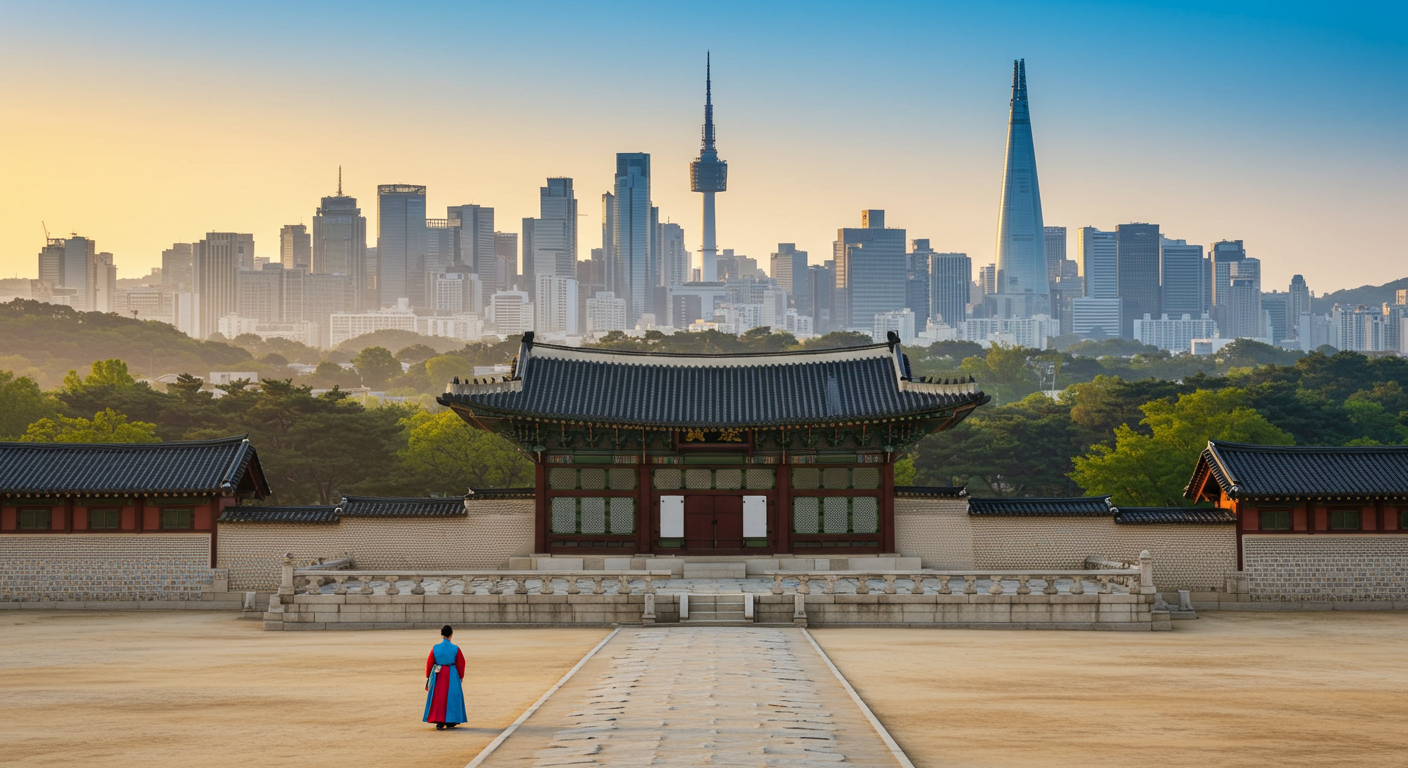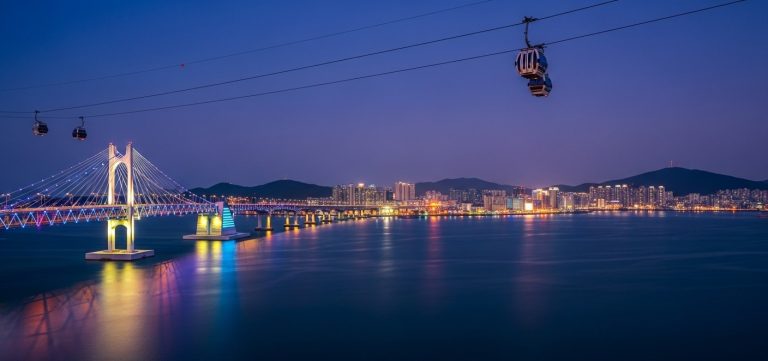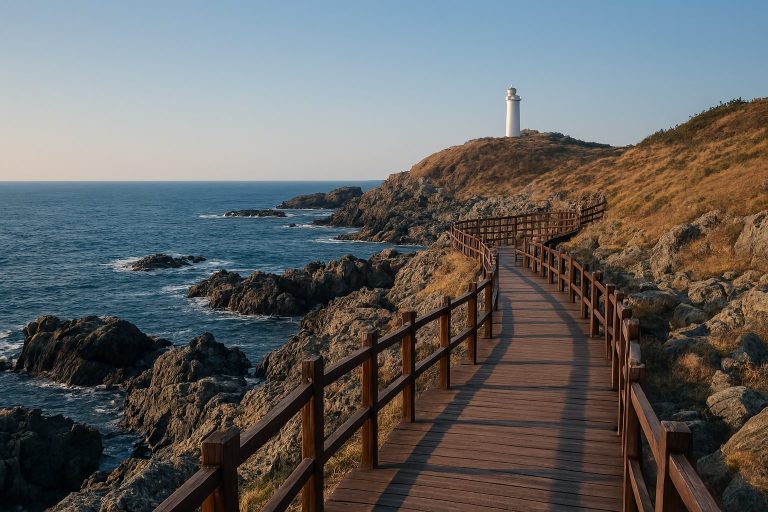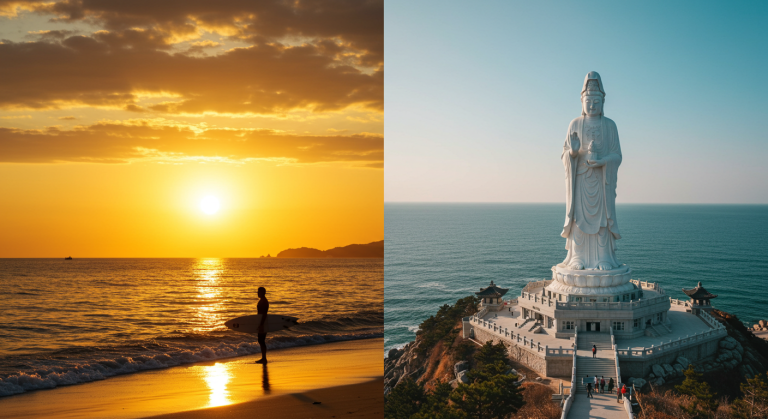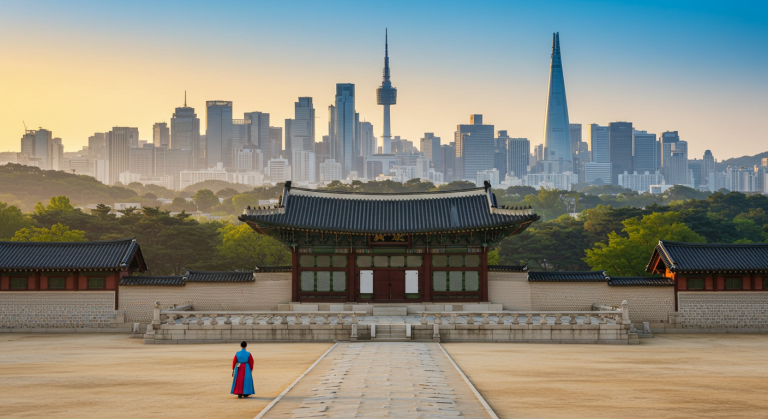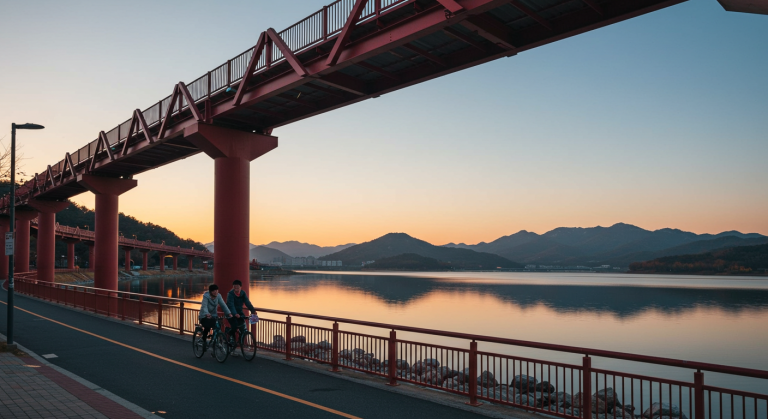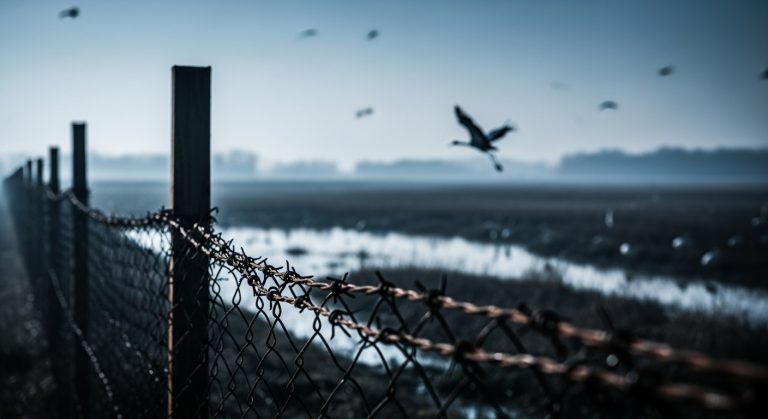Daejeon’s Hidden Charms: Why Korea’s Science City is Your Next Travel Spot

Let’s be honest: when you first think of travel in South Korea, cities like Seoul and Busan immediately jump to mind.
But tucked right into the heart of the country, acting as a crucial transportation and technological hub, lies a city often overlooked by international travelers: **Daejeon**.
For years, it was simply known as the “City of Science and Technology,” a transit point for the KTX train, but I’m here to tell you that Daejeon is so much more than its reputation suggests.
It’s a city of delightful contrasts, offering a blend of cutting-edge innovation, deep historical roots, astonishing natural retreats, and a culinary scene that could rival any major metropolitan area.
I mean, who knew one city could host a globally recognized institute like KAIST *and* a forest where you can walk barefoot for miles?
If you’re seeking an authentic Korean experience that sidesteps the typical tourist crowds, where the pace is calmer and the discoveries feel genuinely personal, then Daejeon is your next must-visit destination.
Over the following thousands of words, I will peel back the layers of this fascinating city, offering practical advice, personal anecdotes, and a truly exhaustive list of the best things to see, do, and eat.
Get ready to explore the hidden heart of Korea! 🇰🇷✨
I. The Silicon Valley of Korea: Science and Futuristic Landmarks 🚀
Daejeon proudly wears the moniker of Korea’s “Science City,” a title earned by hosting Korea’s top scientific institutions, research centers, and a cluster of high-tech venture companies in the **Daedeok Innopolis**.
This focus on innovation permeates the city’s atmosphere, giving it a uniquely intelligent and forward-thinking energy that’s palpable as you explore its northern districts.
When I first visited, I expected dry museums, but what I found were interactive, visually stunning landmarks that make science accessible and genuinely fun for everyone.
This part of Daejeon is a testament to the nation’s commitment to the future, and it makes for an incredibly stimulating day out.
1. The Symbolic Hub: Expo Park and Hanbit Tower
The genesis of modern Daejeon’s science identity can be traced back to the 1993 Daejeon World Expo, which put the city on the global map.
Today, the site, known as **Expo Park**, is a sprawling complex dedicated to science, technology, and culture, and it’s crowned by the magnificent **Hanbit Tower**.
Standing 93 meters tall—a nod to the year of the Expo—the Hanbit Tower is instantly recognizable with its unique, futuristic design resembling a sleek rocket launch.
The name “Hanbit” translates to “Great Light,” symbolizing the bright future of science and technology.
Visitors can take an elevator to the observation deck for a spectacular panoramic view of the entire city, including the meandering Gapcheon River and the surrounding mountains, making it a perfect spot for sunset viewing or just getting your bearings.
Expo Park now hosts several cutting-edge exhibits, including the **Daejeon Shinsegae Art & Science** complex and the **Daejeon Expo World**, featuring immersive media art and VR experiences.
It’s no longer just a historical site; it’s a living museum of the future, so plan to spend at least half a day here to fully engage with the interactive displays.
2. The Educational Powerhouse: KAIST (Korea Advanced Institute of Science and Technology)
No discussion of Daejeon is complete without mentioning **KAIST**, arguably South Korea’s most prestigious science and engineering university, often dubbed the “MIT of Asia.”
The campus itself is a dynamic, sprawling hub of activity, nestled in the Yuseong district.
While it’s a functioning academic institution, strolling through the KAIST grounds offers a glimpse into the youthful, brilliant energy that defines the city’s intellectual life.
You’ll find modern architecture, vast green spaces, and a collegiate atmosphere that’s refreshing.
Plus, the surrounding area benefits from the student population, offering great affordable cafes, specialized bookstores, and a lively, brainy buzz.
II. Nature’s Therapeutic Embrace: Healing Trails and Majestic Forests 🌲
Here’s where Daejeon truly surprises: just minutes from the high-tech research labs are some of the most unique and beautiful natural retreats in all of Korea.
Daejeon is surrounded by mountains and bisected by rivers, providing incredible opportunities for hiking, relaxation, and literal grounding.
My personal favorite experience in Daejeon, and one I recommend above almost all others, is embracing the city’s green side.
It’s the perfect antidote to urban travel fatigue and a fantastic way to connect with Korean nature in a way that feels unique to this region.
1. Gyejoksan Red Clay Trail: The Barefoot Path
This is not just a trail; it’s a therapeutic ritual. The **Gyejoksan Mountain Red Clay Trail (계족산 황톳길)** is famous nationwide for its sprawling **14.5-kilometer path** paved entirely with soft, reddish-brown loess, or red clay.
And the best part? It’s encouraged, almost required, to walk it **barefoot**.
Walking on the Red Clay Trail is an incredibly sensory experience—the cool, smooth, slightly damp clay feels amazing between your toes, providing a natural massage that stimulates pressure points in your feet.
Locals swear by the health benefits, claiming it improves blood circulation, relieves stress, and detoxifies the body.
Trust me, after a day of walking on pavement, sinking your feet into this natural carpet is pure bliss, and the earth provides a genuine sense of connection and peace.
While it’s a barefoot trail, you need to bring a **small towel and a plastic bag**.
The clay can be very messy! There are foot-washing facilities at the start and end of the main loop, but having a towel for drying and a bag for your shoes is essential. Also, be mindful that the trail can be slippery after heavy rain, so always check the weather beforehand.
2. Jangtaesan Recreational Forest: The Metasequoia Giants
If you’re looking for an otherworldly, almost cinematic nature experience, look no further than **Jangtaesan Recreational Forest (장태산 자연휴양림)**.
This forest is an absolute must-see, renowned for being the largest natural habitat of **Metasequoia trees** in Korea, creating a stunning, cathedral-like grove.
The trees here are exceptionally tall, reaching skyward in perfect, straight lines, making for breathtaking photo opportunities and an incredibly tranquil walk.
The forest’s highlight is the **Skywalk**, a unique suspension bridge and elevated deck that weaves through the canopy, giving you a bird’s-eye view of the Metasequoia giants and the surrounding mountains.
The feeling of being suspended among the towering trees is both exhilarating and incredibly peaceful.
3. Hanbat Arboretum: The City’s Green Lung
Right in the center of the city, adjacent to the Expo Park area, is the vast **Hanbat Arboretum (한밭수목원)**, one of the world’s largest urban botanical gardens.
It serves as a crucial green lung for Daejeon, offering themed sections like the Magnolia Garden, Medicinal Plants Garden, and the Children’s Garden.
The arboretum is divided into East and West Gardens, connected by a pedestrian underpass, and it’s a perfect place for a picnic, a light jog, or just sitting on a bench and watching the clouds go by.
It perfectly encapsulates Daejeon’s harmonious balance between modern development and nature preservation.
III. Diving into Daejeon’s Deep History and Culture 📜
While its future-forward image dominates, Daejeon is also rich in cultural heritage, offering deep dives into Joseon-era traditions and unique Korean customs you won’t find anywhere else.
The city acts as a gateway to the past, especially in its quieter, less-traveled corners.
1. Uam Historical Park: A Scholar’s Retreat
The **Uam Historical Park (우암사적공원)** is a beautiful and serene spot dedicated to **Song Siyeol (1607-1689)**, one of the most respected Confucian scholars and politicians of the Joseon Dynasty.
It is built on the grounds where he taught and retreated during his later years.
Walking through the park, you are surrounded by traditional *Hanok* buildings, which showcase classic Korean architecture, along with a quiet pond and meticulously maintained gardens.
It offers a profound sense of stepping back in time and is a wonderful place for quiet contemplation and appreciating traditional aesthetics.
The contrast between this serene, traditional enclave and the nearby modern city center is a stunning realization of Daejeon’s diverse soul.
2. Ppuri Park: A Genealogical Wonderland
**Ppuri Park (뿌리공원)** is, without a doubt, one of the most unique parks in the world, rooted deeply in Korean culture’s emphasis on **Hyo (Filial Piety)** and ancestry.
“Ppuri” means “root,” and the park is dedicated to honoring the history of Korean family names.
The park features detailed monuments and sculptures for over 136 Korean family names, each depicting the family’s origin and lineage.
It is a cultural treasure trove that allows Koreans to connect with their past and is a fascinating place for international visitors to learn about the intricate structure of Korean family culture and the importance of heritage.
It’s a truly moving experience to witness the devotion to one’s ancestry expressed in such a grand, public manner.
3. Travel Planning: The Daejeon Trip Budget Estimator
To help you plan your extended stay, I’ve created a simple interactive tool below to estimate your daily budget based on your travel style.
Just input the number of days you plan to stay and select your preferred accommodation and food styles.
🔢 Daejeon Daily Budget Calculator
IV. The Culinary Soul: Noodle City's Savory and Sweet Legends 🍜
Daejeon's culinary identity is perhaps its best-kept secret, known regionally as the **"Noodle City"** and home to a bakery that draws crowds from all over the nation.
If you’re a foodie, this city alone is worth the trip, offering unique regional dishes rooted in history and heartwarming tradition.
I always tell friends that while Seoul has variety, Daejeon has **focus**, specializing in a few core dishes that they have perfected over generations.
Forget the usual Korean BBQ for a moment and prepare your palate for something truly local and delicious.
1. The Legend of Kalguksu: Daejeon’s Signature Noodle
**Kalguksu (칼국수)**, or "knife-cut noodles," is Daejeon's unofficial representative dish, and its popularity here has a deep, post-war history.
During and after the Korean War, Daejeon, as a major railway hub, received significant flour aid, leading to the development of inexpensive, hearty noodle dishes that provided comfort and sustenance.
The dough for the noodles is hand-rolled and cut with a knife—hence the name—resulting in an irresistibly chewy and slightly irregular texture that holds the rich broth beautifully.
The variations are endless, but the following table summarizes the most popular styles you *must* try in Daejeon.
Comparative Table: Essential Kalguksu Styles
| Style | Primary Flavor Profile | Key Ingredients | Typical Setting |
|---|---|---|---|
| Bajirak Kalguksu | Light, refreshing, savory seafood | Clams (Bajirak), Zucchini, Potato | Traditional, bustling restaurants |
| Deulkkae Kalguksu | Nutty, creamy, slightly sweet | Perilla Seeds (Deulkkae), Milk/Water Base | Small, health-focused eateries |
| Eolkeuni Kalguksu | Spicy, deep, and robust chili flavor | Kimchi, Chili Paste, Beef/Anchovy Broth | Neighborhood *Matjibs* (famous local spots) |
| Dotori Mukbap (Bonus!) | Cool, slightly bitter, savory-tart | Acorn Jelly (Muk), Kimchi, Cucumber, Broth | Gujeuk Muk Town area |
2. The National Treasure: Sungsimdang Bakery
If you ask any Korean, regardless of where they live, to name something famous from Daejeon, the answer will almost certainly be **Sungsimdang Bakery (성심당)**.
It is an absolute cultural institution, operating since 1956, and famously refused to expand to Seoul, choosing to remain rooted in Daejeon as a symbol of local pride.
Visiting the main branch near Daejeon Station or the one on the Euneungjeongi Culture Street is an event in itself; expect a perpetual queue, often spilling out the door, but trust me, it moves fast and is entirely worth the wait.
The sheer variety of breads, from traditional red bean pastries to modern savory creations, is overwhelming in the best possible way.
Case Study: Sungsimdang Must-Haves
If you can only try two things amidst the organized chaos of Sungsimdang, make it these:
- The Fried Soboro Bread (튀김소보로): This is their most famous item—a deep-fried version of the classic sweet *soboro* bread, filled with sweet red bean paste. The exterior is perfectly crisp, and the inside is warm and soft. It’s a total game-changer.
- The Bochu (Chive) Bread (부추빵): A savory masterpiece. A soft, slightly sweet bun filled with a savory mixture of finely chopped chives, egg, and sometimes a hint of pork. It perfectly balances the sweetness of the bread dough with the robust filling.
3. Seokgalbi and Local Market Delights
Beyond the noodles and bread, Daejeon offers other unique savory delights, notably **Seokgalbi (석갈비)**, broiled pork ribs served on a hot stone plate.
The name literally means "stone ribs," and the presentation keeps the tender meat sizzling and the aroma rich until the last bite.
For a more authentic, gritty experience, head to **Jungang Market (중앙시장)** near Daejeon Station.
This traditional market is a sensory overload of sights, sounds, and smells, offering everything from local produce and clothes to, most importantly, countless food stalls (Kalguksu stands abound!).
It's a fantastic place to taste traditional *Jeon* (pancakes) and **Sundaeguk** (blood sausage soup) at prices far lower than in Seoul.
V. Urban Vibrancy and Relaxation: Nightlife and Hot Springs ✨
Daejeon isn't just about history and quiet trails; it also boasts a lively urban core that truly comes alive after the sun sets.
The city is remarkably clean and well-organized, making its downtown areas a pleasant and safe place to explore well into the evening.
1. Daejeon Skyroad: The Digital Canopy
The city’s main nighttime attraction is the **Daejeon Skyroad (대전 스카이로드)** in the Euneungjeongi Culture Street area.
It's a massive, 214-meter-long, full-LED canopy that projects spectacular media art and colorful light shows every evening, transforming the shopping street below into a vibrant, futuristic tunnel.
It is one of the largest outdoor LED screens in Korea and creates an incredible atmosphere for shopping, street food, and people-watching.
It’s centrally located near Daejeon Station and Sungsimdang, making it the perfect post-dinner stop.
2. Soje-dong Cafe Street: Old Charm, New Style
For a more relaxed, aesthetically pleasing urban experience, head to **Soje-dong Cafe Street (소제동 카페거리)**.
This area is a unique blend of old and new, having transformed a cluster of old Japanese colonial-era railway worker dormitories into trendy, hipster cafes, restaurants, and small shops.
The architecture retains the charming, low-rise, traditional style of the past, with each cafe offering its own modern twist on the interior design.
It provides a cozy, intimate atmosphere perfect for slow mornings and long conversations over specialty coffee, feeling completely different from the bustling Skyroad just a few blocks away.
3. Yuseong Foot Spa: The Ultimate Wind-Down
After all the walking—especially if you braved the Red Clay Trail—your feet deserve a treat, and Daejeon provides it in the form of its famous hot springs.
The **Yuseong Hot Springs (유성 온천)** area is known for its therapeutic waters, and the best part is the **free public foot spa** located right near the Yuseong Intercity Bus Terminal.
This mineral-rich water is said to be excellent for skin ailments and fatigue relief.
Sitting outside, soaking your feet in the warm, flowing water, and feeling completely revitalized is the absolute perfect way to conclude a day of intensive Daejeon exploration.
It’s the quintessential Daejeon experience: a touch of luxury and natural therapy, freely available to everyone.
VI. Summary and Key Daejeon Takeaways 💡
Daejeon is a city that rewards the curious traveler.
It is a place where you can spend your morning walking barefoot on a therapeutic red clay path and your afternoon exploring the future of robotics at a world-class science museum.
It challenges the notion that South Korean travel must be limited to the big two cities and offers an authentic, balanced, and affordable experience.
I truly hope this guide encourages you to make Daejeon your next major stop, for the food, the nature, and the fascinating culture.
Essential Daejeon Summary Cards
The Science Core
Daejeon is South Korea's R&D hub. Must-visit: **Expo Park** and the view from **Hanbit Tower**. The city offers a unique intellectual atmosphere thanks to institutions like **KAIST**.
Unmissable Experience
Walk the **Gyejoksan Red Clay Trail** barefoot for 14.5km of natural foot therapy. Also, explore the **Metasequoia Skywalk** at Jangtaesan Recreational Forest.
The Foodie Focus
Daejeon is **Noodle City**. Try the local **Kalguksu** (Bajirak or Eolkeuni style). You absolutely must brave the queue at **Sungsimdang Bakery** for their Fried Soboro Bread.
Did you discover a hidden gem in Daejeon I missed? Or perhaps you have a favorite Kalguksu spot to recommend?
Drop your thoughts in the comments below—I'm always looking for reasons to go back!
Happy travels! 😊
VII. Daejeon Travel FAQ ❓
